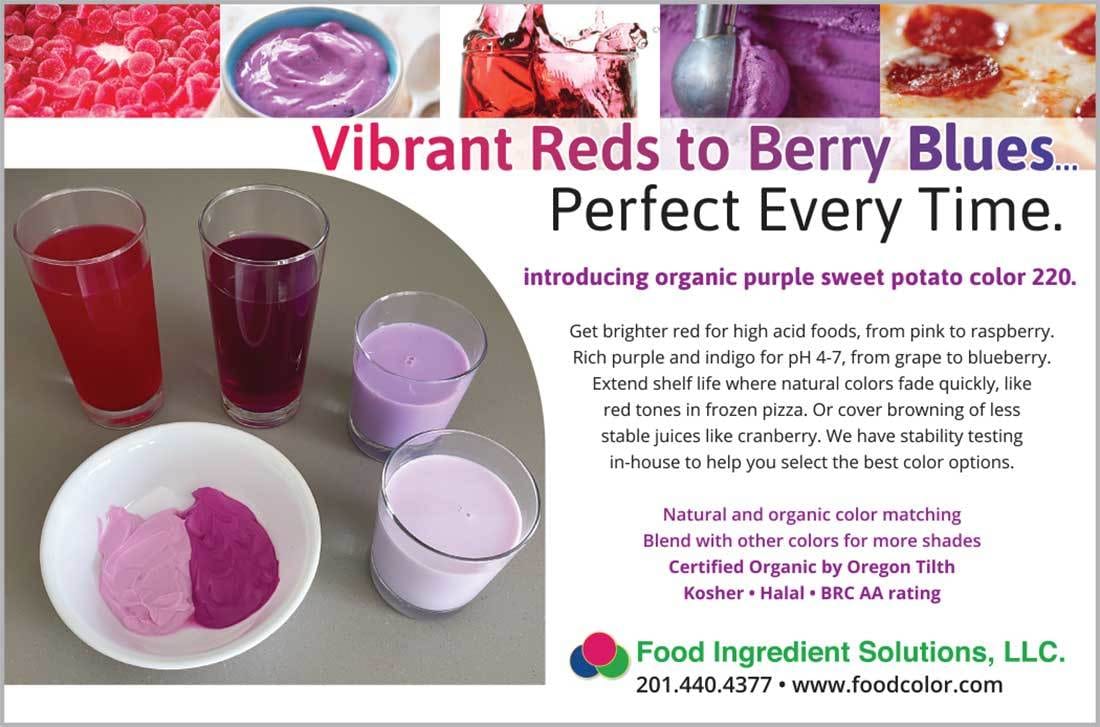Virgin
Like a
CULINARY
creations
While the alcohol-free cocktail trend started a good half-decade or more before the 2020 onset of social disruption, lockdowns, and domino-like closings of clubs, pubs, and restaurants, those upheavals certainly contributed to the rapid rise in consumers choosing to teetotal. Somewhat. Throughout the past two years, consumption of alcohol beverages also rose markedly.
Locked in, socially cut off, bored, under stress, and not driving anywhere seemed to give free rein at first to plenty of at-home alcohol consumption. In fact, according to statistics presented by the American Psychological Association last March, nearly a quarter of American adults admitted to drinking more alcohol to cope with the increased stress. Added to the mix was the relaxing of laws to allow home delivery of alcohol and alcohol beverages which, according to Nielsen led to a 24% increase in alcohol sales.
The party soon tapered off, however, and consumers—now with a more acute awareness of the need to take care of their health—turned toward alternatives to what for many was becoming a habitual daily imbibe. Forbes recently reported that more than half of US adults claim they “are drinking more alcohol-free beverages than they did last year,” while Time magazine projects that “the US market for low- or no-alcohol beverages will grow by 38%” in the coming year alone.
By DAVID FEDER, Executive Editor-Technical
Video courtesy of: Getty images / Atstock Productions
Today’s mocktails might have fake spirits but their flavor is the Real Macallan.

Spirit alternatives that mimic flavors, textures, and aromatics of their full-proof counterparts gave mocktails their great leap forward. Photo courtesy of: Lyres Spirit Co.
This shift away from alcohol but toward facsimiles coincided with the upwelling of a category of fluid products that had barely begun to hit the market before the disruptions of the current times: alcohol-free spirits. Viable (if not perfect) alternatives to the spirits themselves that normally form the core of an alcohol-inclusive cocktail became widely available.
Spirited Efforts
So what ignited the rocket-like rise of consumer craving for the ersatz? It’s simple: Authenticity. If the low/no alcohol spirit alternative has a parallel, it’s the veggie burger. Examining the sudden and concurrent exponential growth of meat replacers, the tipping point becomes clear when their history is probed. Veggie burgers existed for decades before Beyond Meat, Inc.; LightLife Foods, Inc.; Impossible Foods, Inc., or Before the Butcher, Inc.
In the early days of veggie burgers, the idea was not to recreate the flavors and textures of meat—Heaven forbid! These products were targeting consumers who were vegetarians whose primary goal was to “never eat anything with a face.” Rather, the plant-based burger field exploded only when research chefs (chief among them Yves Potvin) realized that it was not only OK but preferred by the majority of consumers to have a product that mimicked the aroma, flavor, mouthfeel, and grilling aspects of its animal-derived counterpart. This flung open the doors to droves of sometimes/undecided vegetarians (“flexitarians”).

Fruits, flowers, herbs, and spices are common components bringing bold flavors and colors to the rapidly growing mocktail trend. Photo courtesy of: Mingle Beverage Company, LLC
Opting in
The Hartman Group pinpointed five drivers of the sober imbibing trend. One of the main drivers is increased attention paid by consumers to what they eat and drink—“mindfulness”—and personal health. The second is overall health and immunity.
The third driver the group noted is the rise in the use of cannabis products. These are perceived as healthier replacements for alcohol. The loss of places where people typically enjoy alcohol beverages—drinking opportunities—mentioned above was specifically pinpointed by the group as the fourth driving influence. Hartman’s data indicate these venue changes had already begun before the social disruptions and will likely continue after the pendulum swings back toward the prior norm.
Finally, Hartman noted that the upwelling of options in the zero-ABV beverages category created a sort of feedback mechanism that led to greater consumption of them. This also indicates the trend has long legs and still has plenty of room for expansion.
The spirit replacers meshed the two spheres of non-alcoholic mixed drinks, creative mixed drinks like those from professional bar mixologists, and old-standard cocktails. Mixed drinks based on faux spirits allowed for building a more alluring cocktail, helping the mocktail trend stay vibrant and giving it a much-needed extra shot.
The new alcohol-free spirits rely not only on such ingredients as essences, extracts, and botanicals (herbs, flowers, and spices, as well as seeds, grains, bark, and roots) just as the ones that go into their full-proof counterparts, but also on methods such as distillation and smoke. Some bourbon replacers are even crafted as a bourbon, aged in oak barrels, and then reverse-distilled to remove the alcohol.
Making zero-ABV work
What all mocktails have in common, whether including a nonalcohol spirit in the formulation or not, is that without alcohol to provide its singular mouthfeel, “bite,” and balance, the crafter needs to draw from an arsenal of ingredients to make up the deficit. Not coincidentally, they turn to the same ingredients— essences, extracts, and botanicals—that makers of spirit replacers employ, plus others to round out the whole mocktail creation, such as concentrates of fruits, sweeteners, citrus, and inclusions.
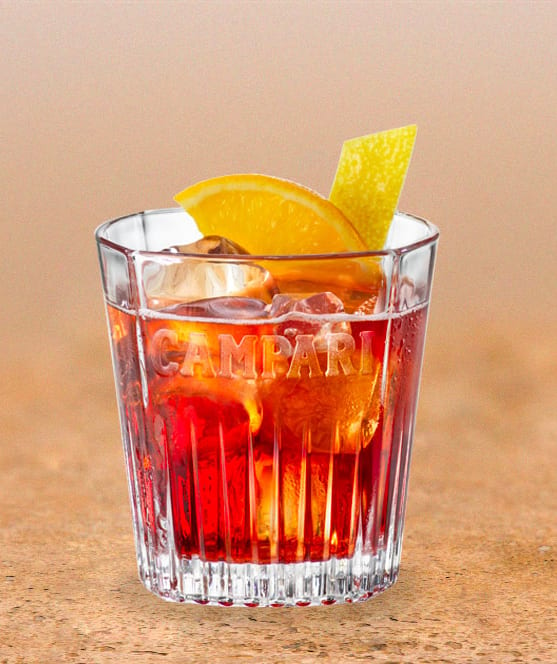
While strong-flavored bitters and apéritives do contain alcohol, if used in small enough amounts they can qualify as a zero-ABV beverage. Photo courtesy of: Davide Campari-Milano NV
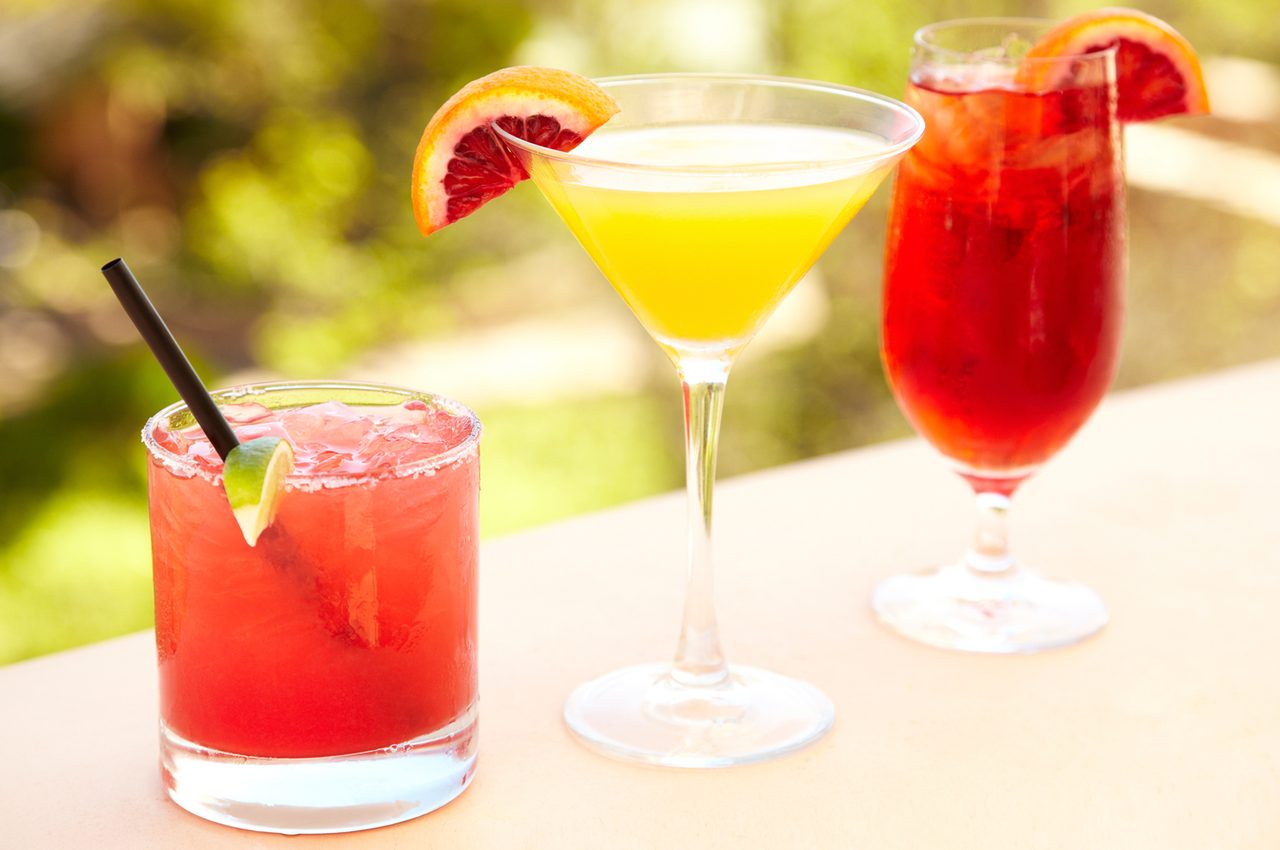
Citrus extracts and concentrates, such as blood orange, contribute strong flavor and familiar mouthfeel to alcohol-free cocktails. Photo courtesy of: iTi Tropicals, Inc.
Another ingredient trending up with today’s mocktail creations is simple carbonation. The “buzz” on the palate provided by carbonation helps temper spices and herbs while carrying fruit flavors and compensating for any overwhelming bitterness. And for smokier mocktails, pinches of specialty cold-smoked salts, such as an applewood or cherrywood smoked salt, can work in conjunction with sweeteners to create a flavor profile that is greater than the sum of its parts.
Flowers are adding their notes to the category, with extracts of hibiscus, elderflower, lavender, and citrus blossoms being common additions. Fruit concentrates, extracts, and powders present opportunities for mixologists to add strong, refreshing flavors and sweetness without sugars. In the fruit category, the strong, tart fruits enjoy the greatest favor, with pomegranate and passionfruit common in many concoctions.
Citrus peel is yet another popular ingredient mocktail makers rely on. Citrus peel stands out for its ability to provide a pungent astringency with a distinct flavor, while the essential oils and chemical compounds such as terpenes in citrus peel can add to the organoleptic characteristics of a drink that almost recreate an ethanol-like back note. While lemon, lime, orange, and grapefruit serve well, mandarin and blood orange have proven to be a trendy contributor, as is the classic bergamot orange (Citrus bergamia).
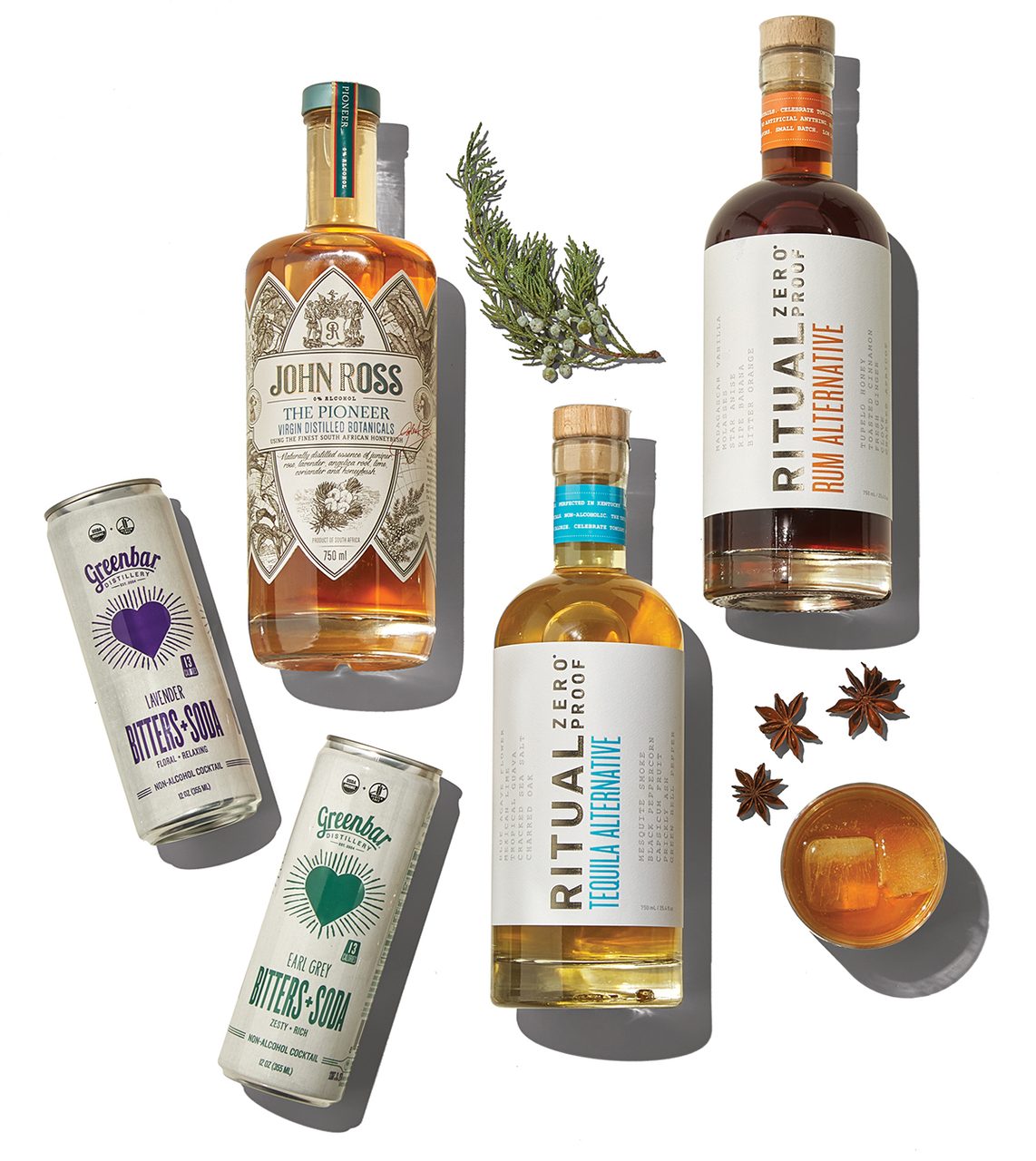
Such rapid expansion and eager buy-in by a generation of consumers rethinking their approach to alcohol means mocktails are here to stay. Photo courtesy of: Whole Foods Market, Inc.


The rapid appearance on the scene of a legion of alcohol-free versions of gin, whisky, bourbon, rum, and vodka elevated what had been complex concoctions based on mixers. These earlier mocktails focused on fruit extracts, herbal concoctions, spices, sweeteners, and even inclusions.
With the explosive popularity of chili peppers in the culinary world still rising, it’s no surprise that alcohol-free adult beverages are also appearing with hints of everything from jalapeños to Bhut jalokia and Scorpion peppers. They’re able to provide a powerful sting that, while not feeling the same on the palate as alcohol at least supplies an inescapable kick that makes it clear the imbiber is partaking of a “grown-up” drink. Other such ingredients giving a distinct bite include ginger, cinnamon, and even horseradish.
Bitters bring in a whole new class of ingredients for mixologists to employ in crafting perfect mocktails. Bitters are typically incredibly complex, medicinal combinations. Each formulation uses up to several dozen different herbs, leaves, bark, spices, citrus peel, roots, and berries (of every type from blackberry to juniper).
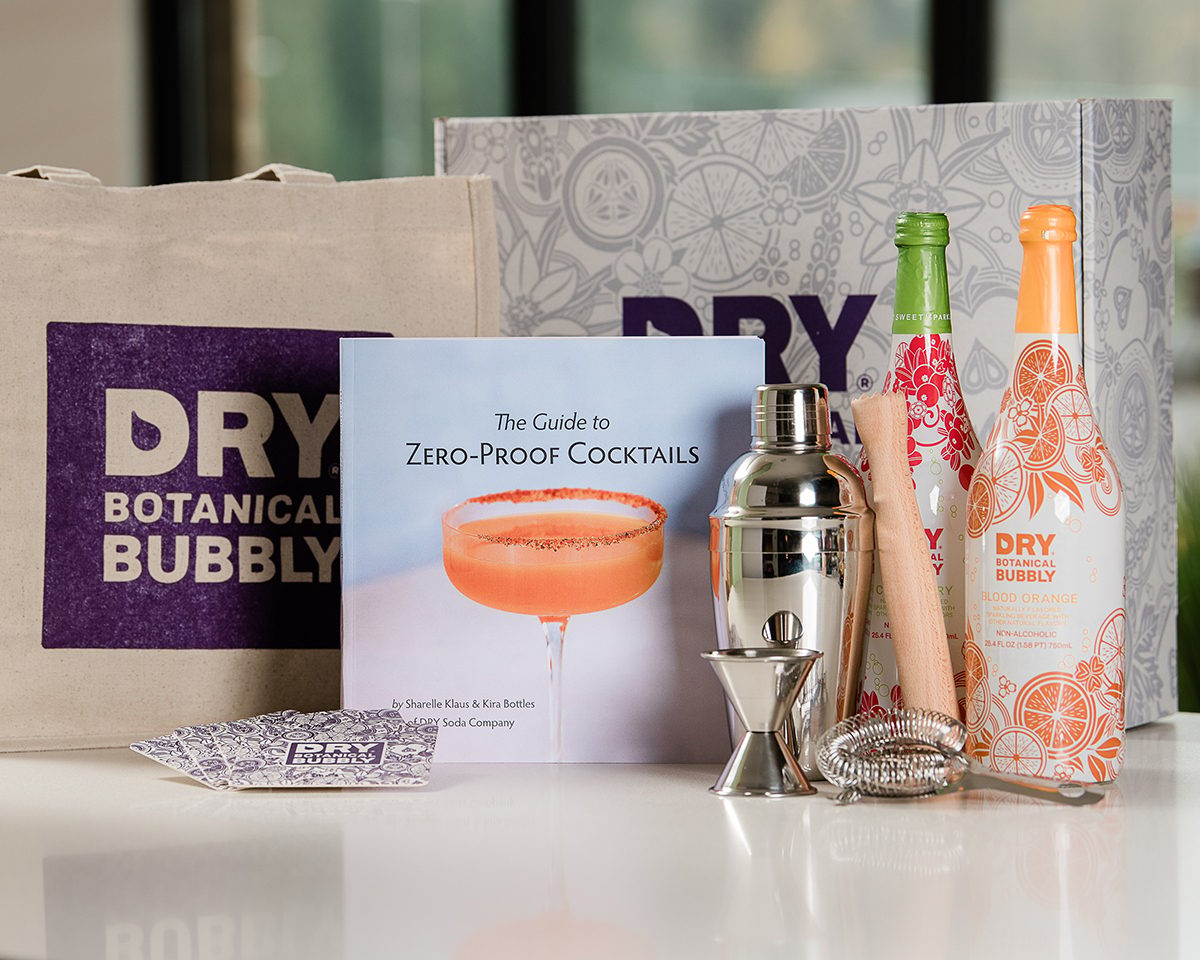
Spirit alternatives allow for both creative mixed drinks, such as from trendy mixologists, as well as old-standard cocktails. Photo courtesy of: RDRY Soda Co.
Althoughnds. they typically are made via maceration in ethanol, they’re used in such minute amounts that they contribute only a trace of ethanol in the final product. In the past decade or so, dozens of brands of bitters have hit the market. Mixologists are teaming up with particular bitters makers to create mocktails that highlight those bran expA few beverage makers have beeerimenting with tea concentrates and flavors in their mocktail creations. Teas can add a tannic astringency, counter acidic notes, and increase accents citrus, spice, and fruit flavors. With hundreds of varieties to choose from, developers can opt for something simple like a bright pekoe or a slightly floral black tea, or go more complex with a smoky Lapsang souchong or herbal/floral Earl Grey. The caution is that too much tea flavor can evoke an actual tea beverage rather than bringing the desired subtle notes to the final product.
Similar to bitters are apéritives that are low in alcohol and strong in flavor. Examples include Davide Campari-Milano NV’s eponymous Campari, the artichoke apéritif Cynar, and Aperol, made with gentian (Gentianaceae), rhubarb, and cinchona, a flower in the Rubiaceae genus. Alcohol-free cocktail developers wishing to incorporate them need to ensure that only enough of the flavoring is used to keep the final percentage of alcohol below 0.5% for the product to qualify as a zero-ABV beverage. PF
November 2021

